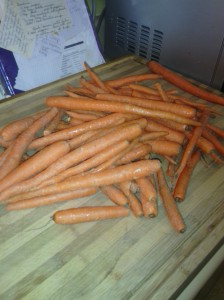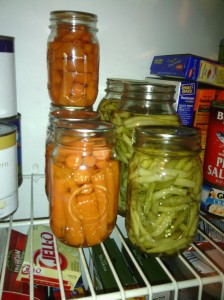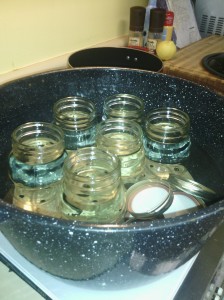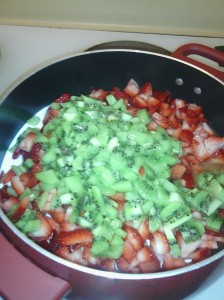
I was recently given several pounds of carrots. Most people would scratch their heads and wonder what in the world they were gonna do with more than 6 pounds of carrots! If you have a pressure cooker/canner you can very easily store them for later. Which is what I did.
I also have been getting quite a lot of snap beans (green beans) from my kitchen garden. I planted a mix of wax, green, and purple beans. Aren’t they pretty? I never tried the purple ones before this year. I was amazed to find out than when cooked they look just like any other green bean. 🙂 Since I don’t really want to have green beans every night of the week, and I don’t want all of my efforts in the garden to go to waste, I can them for later use. It’s really very easy to do. You only need a few items: jars, lids and rims, salt, canning tongs, and your pressure cooker/canner.
1. Wash the beans and snap off the stems/ends if you like. I usually snap them in half too, but you can process them whole as well if that’s your preference.
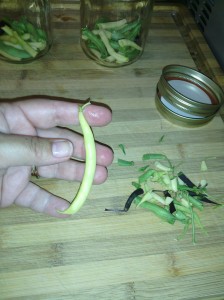
2. Put them into clean, sterilized jars. I am using pint jars today. Be sure to really pack them in as tight as you can!

3. Add 1/2 tsp. of salt to each pint or 1 tsp. per quart.
4. Add hot water to each jar leaving 1″ of head space at the top. Then, use a slim rubber spatula to gently remove air pockets from the jars. Add more water if you need to.
5. Wipe the rims of the jars with a damp cloth. This step is important! If the rims are not clean, your jars may not seal properly.
6. Put the lids/rims on the jars. Do not over tighten them, just close them like you would a jar of mayonnaise.
7. Load the jars into your canner with water coming up about 1/4 way on the jars. Close the canner and follow the manufacturer’s instructions to use it.

8. I add the weight for 10 pounds of pressure and wait for the canner to start making it’s jiggling noises. That’s when you start counting the processing time. For green beans you process them for 20 minutes in pint jars, 25 in quart jars.
9. When the processing time is up, turn the heat off and wait for the canner to cool down. This takes awhile…mine sometimes takes about 40 minutes to an hour to cool enough. When it’s cool, remove the weight and lid from the canner carefully. Let it stand open for about 10 minutes, and then remove the jars to a towel with the canning tongs.
10. After your jars have sat for 12-24 hours, remove the rims, wipe the jars, and mark the lids with the contents and date. Store them in a cool, dark place until you’re ready to use them.
